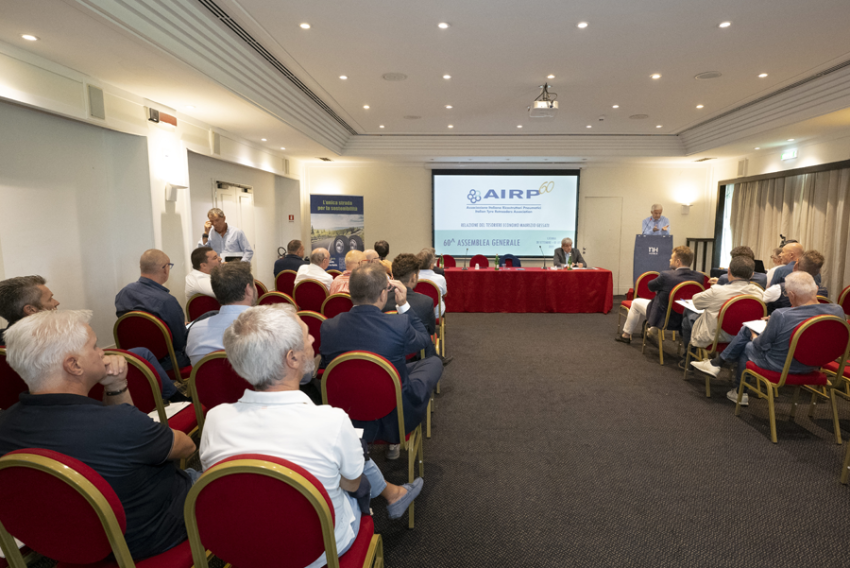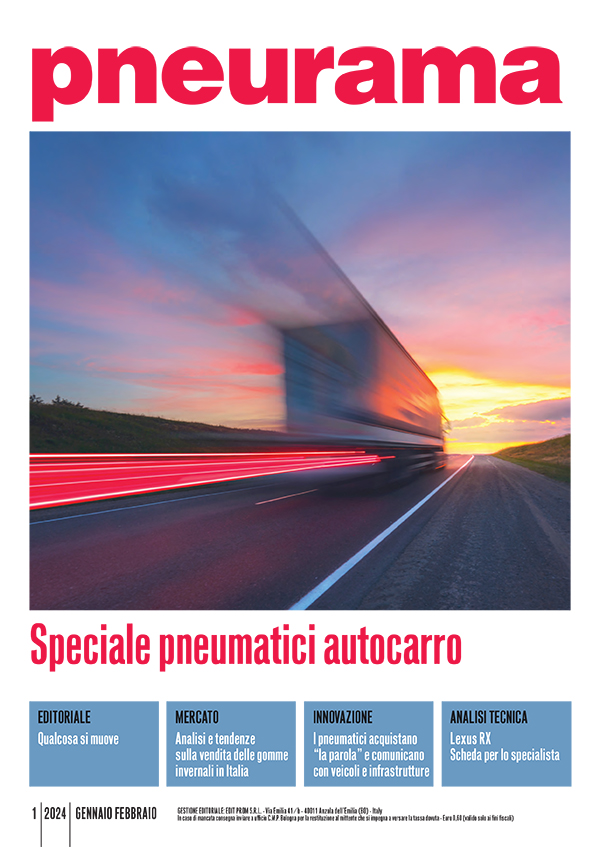After a 2021 characterized by a welcomed recovery for retreading sector, several elements of difficulty and concern for Italian companies have cropped up once again, but there is no shortage of ideas to work on. This marked the beginning of the 60th general assembly of AIRP - Italian Association of Retreaders – which opened in Catania on September 30, and this year's meeting was, as expected, rich in contents and topic for debate. In his usual introductory report, AIRP president Stefano Carloni listed the main difficulties currently facing the industry: "We are staring at a series of problems of unprecedented complexity, and I think the best thing to do is to look at them with impartiality, without creating needless scaremongering but trying to face them with sound mind. They are for the most part problems of an international, if not global, nature, with causes and possible solutions that transcend our sphere of action," Carloni said, continuing, "In the 2019 assembly we could not have imagined the arrival of a global pandemic, which would have brought entire industrial sectors to a standstill triggering a worldwide crisis, creating long-range and long-term repercussions that we are still facing. Today we candidly admit that no more than a year ago we would never have imagined the outbreak of bloody conflict right on the doorstep of the European Union. The significant repercussions of these events are known to all: in August, Istat recorded a 136 percent year-on-year increase in energy prices, 63 percent for gas, and 18 percent for automotive diesel (with peaks of +33 percent)."
If on the one hand, faced of this scenario of great uncertainty the market seems to be slowing down, the president pointed out that, on the other, even at an institutional level no real progress has been made over the past year in terms of support measures for the sector; in fact, EU directives have not yet been translated into any concrete action to encourage sustainable practices such as the use of retreads, and even the proposed tax credit, on behalf of buyers, that the association has been promoting for some years has once again been rejected. Next, Carloni mentioned the successful result of obtaining an increase from 20 to 30 percent of the minimum quota of retreaded tires to be purchased by fleets performing public service, noting, however, that AIRP's attempt to strengthen the rule by introducing a penalty system against companies that do not comply with the 30 percent minimum quota has met with resistance, "because we are well aware that at the moment we cannot count on any kind of sanction to discourage the practice of bypassing the legal obligation."
Similarly, At a European level, Carloni continued, the situation is far from positive, and indeed 2021 threw yet another bitter blow to industry with the suspension of anti-dumping duties on Chinese tires imposed by the European court after upholding the appeal filed by Chinese manufacturers. This is a measure dictated by purely technical reasons, while the political will to restore the duties as soon as possible, calculated according to a different method, seems to be confirmed, "in the meantime, however, even this shield has been removed, despite the long efforts made to have it in place to protect the European market.
However, there is no shortage of projects to work on, and here Carloni stressed the importance of working with tire manufacturers on common goals, such as promoting an overall legislative framework aimed at encouraging concepts such as eco-design, to encourage maximum product durability - which in the case of a tire obviously means retreadability. "At a time when we are all looking for ways to save strategic raw materials, we continue to fail to understand that retreading should be a top priority in a plausible tire recovery plan. I believe that in the next legislature the tire manufacturers who really care about retreading should join us in our effort to help our industry, because if this is a matter of survival for us it will soon become a matter of survival for them as well. Without retreading, at least for the trucking industry, but the same goes for other sectors as well, tires might become a commodity: a product where price will remain the main selling point."
Designed to be reused: eco-design according to Michelin
Eco-design was precisely the subject of a talk by Marco Mangialardo, Michelin Italy innovation manager who explained to AIRP members the different technological solutions developed by the French manufacturer to ensure maximum durability and efficiency for its truck tires. Mangialardo recalled the "4 R's" philosophy behind Michelin's products, namely: Reducing CO2 emissions and tire weight; Renewing energy and raw materials with a focus on using materials of natural origin; Reusing through repair, regrooving and retreading; and finally Recycling waste but especially materials taken from tires at the end of their life, developing new technologies that allow them to be reused within new tires. These assumptions have specific implications when it comes to designing tires: "When we develop the technologies we will then apply to our tires," Mangialardo explained, "we look at solutions with a dual benefit: these must guarantee the required performance during the original life-cycle of the tire, but they must also guarantee the same performance on subsequent life cycles as well. So, our designers, when developing a new product, will not separate the concept of a new tire from a retread: it’s one overall concept." Therefore, we must make a distinction between tread performance, which affects the tire's single life cycle, and casing performance, which affects all the life cycles of the tire itself. The multi-life approach Michelin uses to design truck casings focuses on three main aspects with as many exclusive technological solutions: the first concerns the steel belt surrounding the casing, developed with the double objective of optimizing efficiency and rolling resistance through a large and consistent footprint, and protecting the casing from mechanical stress, prolonging its life cycle. The second element concerns bead technology and the use of nylon: "By increasing the stiffness of the bead, we have improved the tire's performance but also reduced all the negative side effects created by stress on the casing." Finally, the casing is made of thinner steel cords covered with a rubber linings, to reduce the weight of the tire, protect the steel from oxidation and dissipating the heat generated when driving: an additional advantage in terms of durability and retreadability. Mangialardo then concluded his talk by mentioning a few figures related to the eco-design approach applied to tires: "In a retread we put only 30 percent more raw materials than in a new single-life tire. In terms of recycling, we have on average 50 kg less (the average weight of a casing) per tire to recycle, again comparing with new single-life tires. As for economic benefits, if we take a retreaded tire, we can at least double the mileage, and in terms of spending, customers can save an average of 40% on the cost of a tire. For all these reasons in Michelin we are convinced that the eco-design approach in a multi-life model is the best solution for a sustainable and profitable business for our customers."
The ups and downs of market trends
Much interest was also aroused by the speech of Ivano Garavaglia, head of retail at GfK, who presented a focus on the new and retreaded truck tire market in the period January-July 2022 with data collected from a panel of tire dealers who regularly take part in the research institute's surveys. The period analysed shows, compared to the same period in 2021, a significant growth for the truck tire market, in terms of volume and, more importantly, in terms of value generated, thanks to the net increase in sales prices. Within this generalized increase, however, it is appropriate to highlight the performance of the new tire segment, which has shown the strongest growth when compared to retreads which, despite some growing figures, it is still a long way from the sales volume recorded in 2019 and shows a much smaller pricing dynamic. This obviously implies a decline in the market share for retreads compared to newly produced tires: a trend that has, after all, being consistent for several years now.
A significant finding, according to the panel of tire dealers observed, is the trend in the number of article codes on the truck market: for new tires, codes have been steadily increasing over the past three years, while retreads have been declining in the number of versions and options offered. This was perceived by retreaders as a wake-up call as there are still enough selling opportunities for many of the products being taken out of the market.


